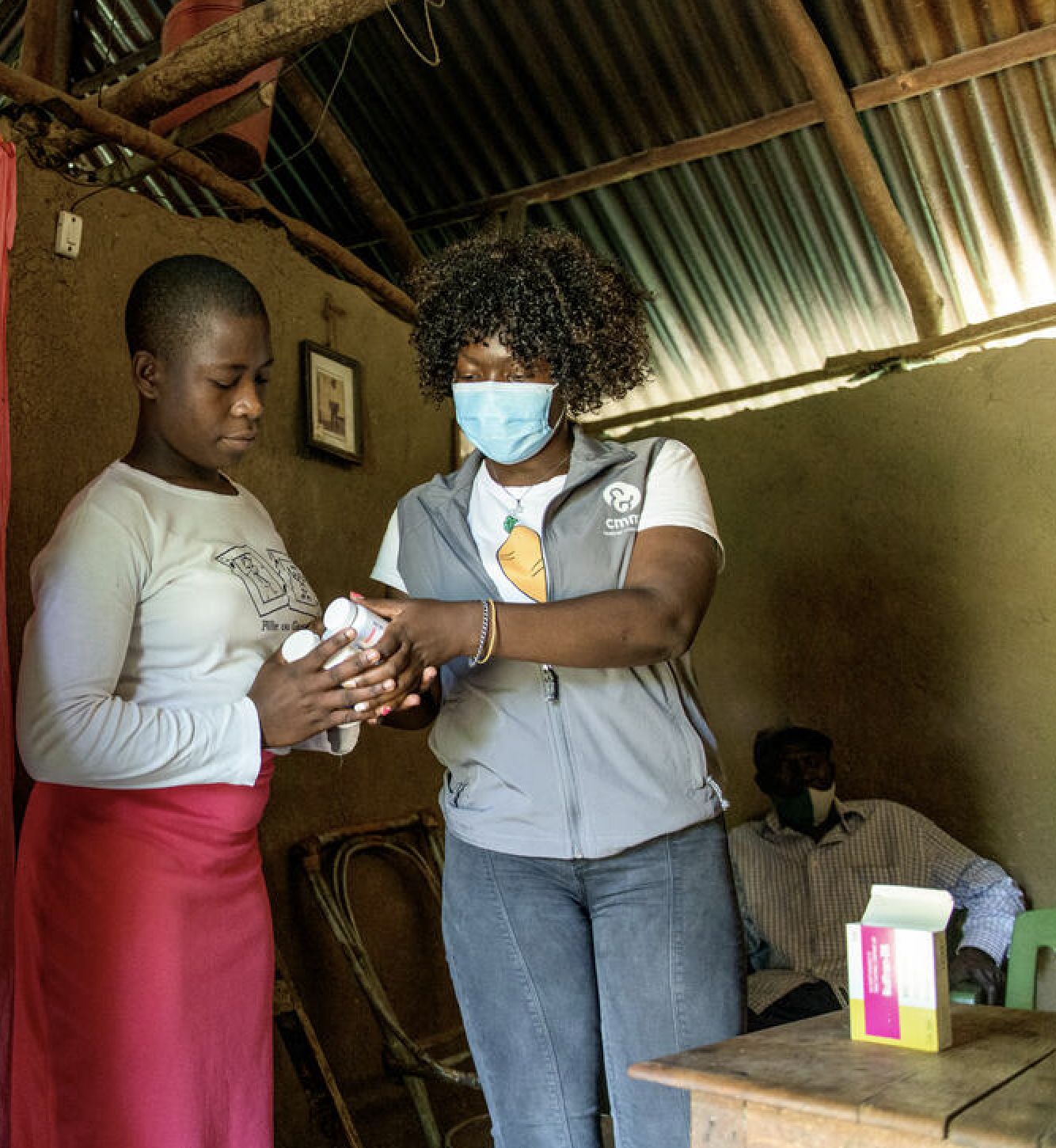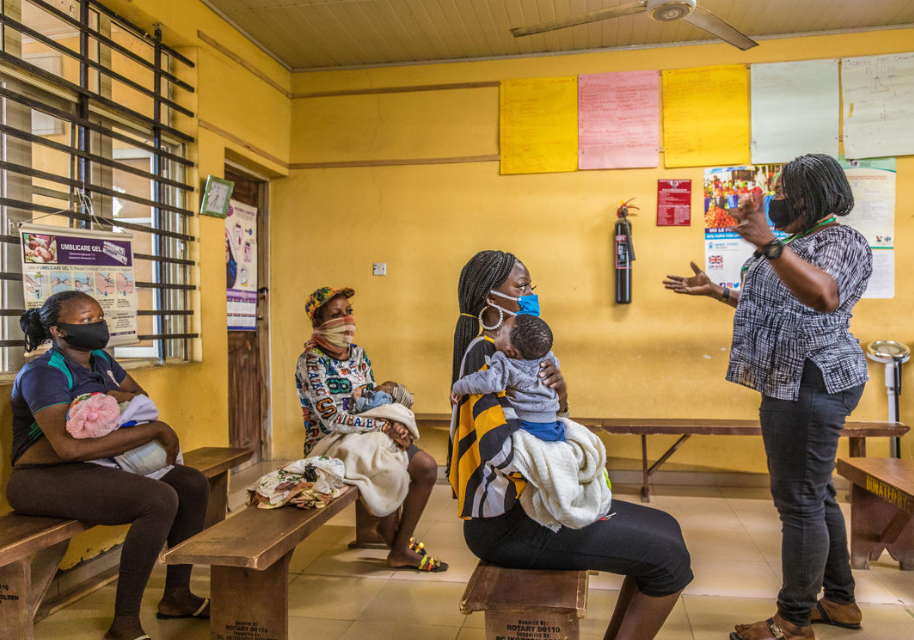Founded in 1988, World AIDS Day was the first-ever international day for global health. Every year, agencies, governments, and civil society join together to campaign around specific themes related to HIV.
World AIDS Day 2022
World AIDS Day is organized every December 1 around the world. It is the setting for demonstrations of support for people living with HIV, and it commemorates those who have died from it.
Launched in 1988, World AIDS Day was the first international day dedicated to global health. Every year, governments and civil society come together to highlight issues specific to HIV. Increasing funding for the AIDS response, raising awareness about the impact of HIV on people’s lives, eradicating stigma and discrimination, and also improving the quality of life of people living with HIV remain essential.
Since its creation, L’Initiative has established itself as a key mechanism of France’s strategy in the fight against HIV/AIDS, tuberculosis, and malaria. Today, it is a key partner of the Global Fund.
Between 2018 and 2021, through its different areas of work, L’Initiative supported 118 interventions aimed solely at responding to HIV and AIDS (31 projects and 87 technical assistance assignments), totaling a committed amount of 37.3 million Euros.
2022 is a year focused on awareness and collective action around pediatric HIV
L’Initiative has firmly positioned itself on this issue. This year, L’Initiative participated in, organized, and supported various events on the subject: Sidaction and Grandir Ensemble network webinar, 6th regional seminar on pediatric HIV organized by Réseau EVA network, roundtable on pediatric HIV at AFRAVIH 2022, and a regional meeting organized by the Civil Society Institute for HIV and Health in West and Central Africa in Cape Verde.
Featured
Globally, 76% of adults living with HIV are on treatment compared to just 52% of the 1.7 million children aged 0-14 living with HIV. The numbers are even lower in West and Central Africa (WCA), with just 35% on treatment, according to UNAIDS data.

In addition to improving access to pediatric treatment, efforts are needed to prevent vertical transmission of HIV (PMTCT: Prevention of mother-to-child transmission).
In 2021, 40% of pregnant women living with HIV did not receive treatment during pregnancy in WCA (compared to 19% globally). Lack of treatment during pregnancy and breastfeeding was responsible for two out of three new vertical infections in WCA in 2021.
For example, 55,000 children were born with HIV in the region in 2021, compared to 156,000 globally, and gaps in infant testing mean that more than two-fifths of children living with HIV remain undiagnosed.
L’Initiative’s support to combating HIV and AIDS through its different areas of intervention between 2018 and 2021
During this period, through its different areas of work, L’Initiative supported 118 interventions aimed solely at responding to HIV and AIDS (31 projects and 87 technical assistance assignments), totaling a committed amount of 37.3 million Euros.
1/ Projects (operational research and intervention projects) supported by L’Initiative (2018-2021)
Between 2018 and 2021, 31 projects were approved that had an HIV and AIDS component, with a committed budget over the period of €28.7 million.
Geographic intervention areas for projects supported by L’Initiative
Under the Projects Channel, L’Initiative primarily supported projects in the Greater Sahel region (27% of projects with an HIV and AIDS component undertaken between 2018 and 2021) as well as East Africa, the Gulf of Guinea, and Three Oceans (respectively, 13% of projects). More than 23% of HIV and AIDS projects are led by international NGOs.
Type of leads supported by L’Initiative: strong civil society focus
Project leads are mainly civil society actors (CSOs), with the majority being local NGOs and community-based organizations (58% of projects). One-third of the projects (29%) are carried out by international NGOs and foundations. The remaining 13% of HIV and AIDS projects are carried out by research institutes and universities.
L’Initiative support to pediatric HIV projects
Between 2018 and 2021, L’Initiative supported seven projects aimed at combating HIV among children and adolescents (23% of projects focused on the HIV and AIDS response during this period).
2/ L’Initiative technical assistance (2018-2021)
Between 2018 and 2021, L’Initiative funded 87 technical assistance assignments that had the HIV and AIDS response as the sole component, with a total committed budget over the period of 8.6 million Euros.
Geographic intervention areas for TA provided by L’Initiative
TA assignments with HIV and AIDS as a component are mainly concentrated in the Greater Sahel region (40% of TAs), the Gulf of Guinea (14%), the Three Oceans region (12%), and East and Central Africa (11% respectively for each region).
Type of TA recipients
Between 2018 and 2021, recipients of HIV and AIDS TA were primarily local NGOs and CBOs (35% of TAs), followed by national programs (31%) and CCMs (13%). For other TA assignments, recipients were primarily Ministries of Health, NACs, and international NGOs.
L’Initiative support to pediatric HIV projects
Between 2018 and 2021, five pediatric HIV TA assignments were funded.
Over the course of 2022, L’Initiative funded six TA assignments focused on responding to pediatric HIV, including four that supported situational analysis of the management of pediatric HIV.
Supporting pediatric HIV management: transition to pDTG
L’Initiative has compiled various documents for program experts working in the field of pediatric HIV, focusing in particular on the transition to pediatric Dolutegravir (pDTG).

Download the “Transition to Pediatric Dolutegravir (pDTG)” toolkit.
What about adolescents?
While under-15s appear to have been left out of the HIV response, adolescents and young people also have specific needs and face particular challenges that go beyond biomedical considerations.
Pediatric HIV has serious social consequences for these young people in their transition to adulthood as they continue to experience discrimination and need access to more psychological support.

Overview of adolescent and young people projects funded by L’Initiative
In Burundi, Burkina Faso, Mali, Senegal
The ‘KORA-DUB’ project led by ANCS improves HIV and sexual and reproductive health services and the human rights of young key populations in West and Central Africa.
In Burkina Faso, Burundi, Congo, Côte d ‘Ivoire, Mali, Togo
Training and empowerment project to improve support for adolescents and girls infected or affected by HIV, which is its second phase and is led by SIDACTION
In Burundi and the Democratic Republic of Congo (DRC)
The AGIR project led by SIDACTION focuses on the sexual health of young people and people living with HIV.
The project’s aim is to improve access to sexual health services for young people and people infected and affected by HIV who are monitored by community facilities in the Great Lakes region (Burundi and South Kivu in the DRC).
In Senegal
The project “strengthening decentralized care of children living with HIV in Senegal” led by CRCF (Regional Centre for Research and Training at Clinique de Fann).
In Senegal and Burkina Faso
The project “Youth on the Lookout – From Social Audit to Health Rights for All: Adolescent Girls and Young Women in Action!” led by Equilibres & Populations – Equipop.
In DRC
The project “Access to SRH/HIV – TB information and services” for young people aged 10-24 in Kinshasa, led by Réseau des Associations Congolaises des Jeunes contre le Sida (RACOJ/Sida).
In Ethiopia
“Leaving no one behind to access comprehensive quality HIV care and treatment in Ethiopia” project led by Network of Networks of HIV Positives in Ethiopia (NEP+).
The aim is to improve the accessibility and quality of comprehensive HIV and AIDS care and treatment for adolescents and young adults living with HIV.
Côte d’Ivoire and Burkina Faso
An operational research project entitled “Mother, child, adolescent: developing strategies to improve the integration of HIV, tuberculosis and malaria prevention, testing and care into health systems” led by the IRD (Institut de Recherche sur le Développement).
In Guinea
The PAJES project (Empowerment of Organizations and Young Committed to Sexual Health) led by Solidarité Thératique et Initiatives pour la Santé (SOLTHIS)
The overall objective is to contribute to improving the sexual and reproductive rights of young people in Guinea, especially young girls. In order to achieve this, the project aims to empower members of the two Guinean civil society networks to increase the impact of their SRHR activities.
In Vietnam
The project “Saving the Future 2.0 – Strengthening community-based innovative interventions to prevent HIV transmission among people who use drugs in Vietnam,” by the Center for Supporting Community Development Initiatives (SCDI)











